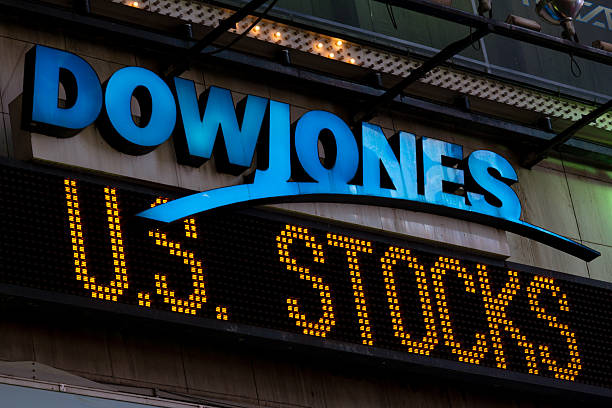The Dow Jones Industrial Average, often referred to simply as the Dow Jones, is one of the most widely recognized indices in the financial world. It tracks the performance of 30 large, publicly owned companies trading on the New York Stock Exchange (NYSE) and NASDAQ. Understanding the Dow Jones share price is essential for investors and financial analysts alike.
Understanding Dow Jones Share Price
The Dow Jones Industrial Average, established in 1896 by Charles Dow, is a price-weighted index. This means that the companies with higher stock prices have more influence on the index’s value. The share price of Dow Jones is calculated by summing up the prices of the 30 component stocks and dividing by a divisor that adjusts for stock splits, spin-offs, and other structural changes.
Factors Influencing Dow Jones Share Price
Several factors influence the Dow Jones share price, including economic indicators such as GDP growth, employment rates, and inflation. Market sentiment, based on investor confidence and expectations, also plays a crucial role. Additionally, the performance of individual companies within the index can impact the overall Dow Jones value.
Historical Trends of Dow Jones Share Price
Over its long history, the Dow Jones has experienced significant fluctuations. Major events such as the Great Depression, the Dot-com bubble, and the 2008 financial crisis have all left their mark on the index. Understanding these historical trends helps investors anticipate future market movements.
What is the Dow Jones Industrial Average?
The Dow Jones Industrial Average (DJIA), established in 1896 by Charles Dow and Edward Jones, is one of the oldest and most widely quoted stock market indices in the world. It consists of 30 large, publicly traded companies based in the United States that are leaders in their respective industries.
How Dow Jones Share Prices are Calculated
Understanding how Dow Jones share prices are calculated is fundamental to interpreting its movements. The DJIA is a price-weighted index, meaning that its value is determined by the prices of the 30 constituent stocks, rather than their market capitalizations. This makes the index more sensitive to high-priced stocks.
Analyzing Current Dow Jones Share Price
Currently, the Dow Jones is trading at [current price], influenced by recent economic data and corporate earnings reports. Factors such as interest rate changes and geopolitical tensions are also affecting market sentiment.
Forecasting Dow Jones Share Price
Experts use a combination of technical analysis, fundamental analysis, and economic forecasting to predict the Dow Jones share price. While no method can guarantee future performance, these tools provide valuable insights for investors.
Investing in Dow Jones Shares
Investing in the Dow Jones offers diversification across 30 industry-leading companies, reducing risk compared to investing in individual stocks. However, investors must be aware of market volatility and economic cycles that can impact stock prices.
Comparison with Other Market Indices
The Dow Jones is often compared with other market indices like the S&P 500 and NASDAQ Composite. Each index tracks different groups of stocks, with the S&P 500 being broader and the NASDAQ focusing on technology companies.
Environmental, Social, and Governance (ESG) Factors
Increasingly, investors are considering ESG factors when making investment decisions. Companies included in the Dow Jones are evaluated based on their environmental impact, social responsibility, and corporate governance. These factors can influence stock prices and investor sentiment.
Impact of Global Events on Dow Jones Share Price
Global events such as political elections, natural disasters, and pandemics can significantly impact the Dow Jones share price. Investors must stay informed about global economic developments to anticipate market reactions.
Tips for Monitoring Dow Jones Share Price
Several tools and resources are available for monitoring Dow Jones share prices, including financial news websites, stock market apps, and trading platforms. Developing a monitoring strategy can help investors react quickly to market changes.
Dow Jones Share Price and Economic Development
The performance of the Dow Jones is closely linked to broader economic indicators such as GDP growth and consumer spending. Policy changes, such as interest rate adjustments and fiscal policies, can impact stock prices and investor confidence.
Conclusion
Understanding Dow Jones share price is crucial for anyone interested in the financial markets. By analyzing historical trends, current data, and future forecasts, investors can make informed decisions to achieve their financial goals.
FAQs About Dow Jones Share Price
- What does the Dow Jones Industrial Average represent? The Dow Jones represents the performance of 30 large, publicly-owned companies in the United States.
- How often is the Dow Jones index updated? The index is updated whenever there is a significant change in the stock prices of its component companies.
- How can I interpret Dow Jones share price movements? Movements in the Dow Jones reflect changes in the stock prices of its component companies and broader market sentiment.
- What are the main sectors covered by the Dow Jones? The Dow Jones covers various sectors, including technology, healthcare, finance, and consumer goods.
- Where can I find historical data on Dow Jones share prices? Historical data on Dow Jones share prices can be found on financial news websites, stock market platforms, and economic research websites.

